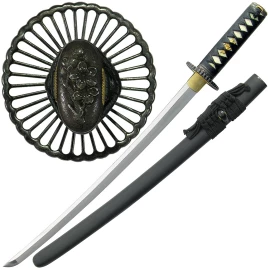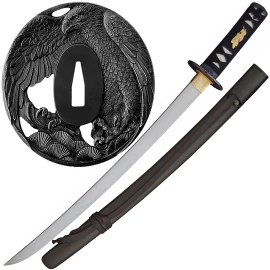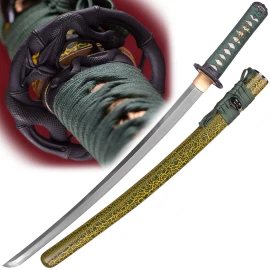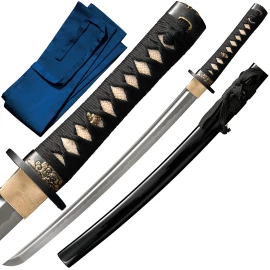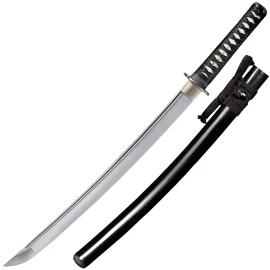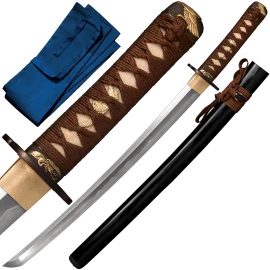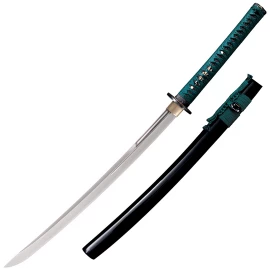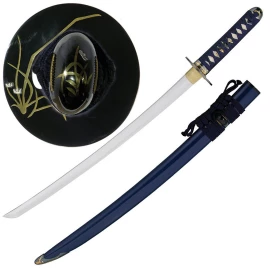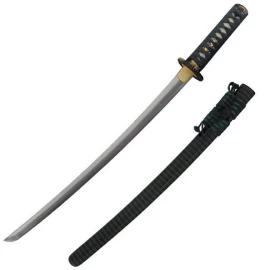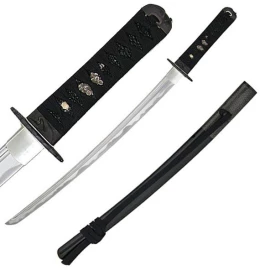Wakizashi Practical
References to wakizashi use date at least back to the sixteenth century. Originally, the term wakizashi was used to mean any sword worn on the side of the main sword. Later, the term was used to denote the group of swords which were shorter than the main sword of the samurai, and as a result, wakizashi acquired the meaning of the side sword, because a side sword was shorter than the main sword by its nature.
Filter products
Wakizashi
The samurai used to wear different types of side swords or daggers; for example, chiisa-gatana or yoroi-doshi, and the term "wakizashi" did not mean any official blade length. The first usage of a wakizashi dates back to the period between 1332 and 1369. For example, Oda Nobunaga (織田 信長, 1534–1582) wore a daishō pair of uchigatana: a katana with a wakizashi. This reflects the common practice of wearing a wakizashi as the side sword of a katana.
After the Muromachi period, the rulers of Japan tried to regulate the types of swords and the social groups which were allowed to wear them. This was to enhance the reputation, power and the class of the samurai class, who were the only social class permitted to carry the daishō. In the late Momoyama period the government passed laws which categorized the swords in accordance to their blade length. Nevertheless, there were people who openly disobeyed the laws and carried long wakizashi (ōwakizashi), which had approximately the same length as the katana. This was caused by the confusing definition of katana, wakizashi, and tantō of those times, and some townsmen and members of yakuza gangs carried such swords.

